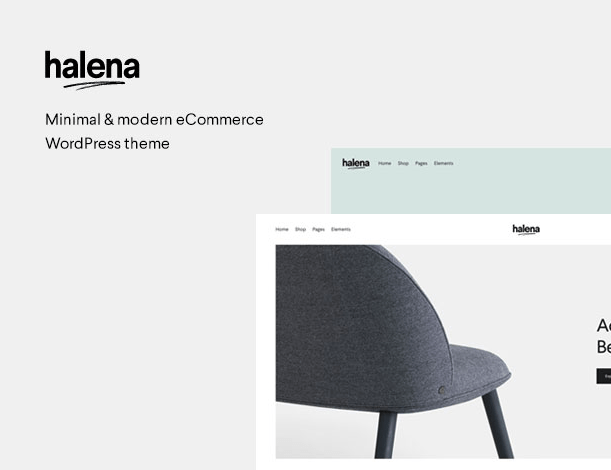Women make up about half the population, so a robo-advisor created specifically for women may not seem super specialized.
But when you consider about 85 percent of financial advisors are men, and when you realize the financial services industry still markets itself primarily to men, Sallie Krawcheck looks more like a visionary.
In 2016, Krawcheck, a Wall Street veteran, started Ellevest, a robo-advisor designed specifically for women. Now Ellevest has about $140 million in assets under management and more than 15,600 clients.
This kind of success speaks for itself. Still, many people wonder whether the robo’s algorithms really work better for women or if Ellevest has simply created a brilliant marketing scheme to draw in female investors.
Ellevest Review
Why a Woman-First Robo-Advisor?
Naturally, robo-advisors welcome customers of any gender. Wealthfront, Betterment, M1 Finance — none of these industry leaders are interested in how you identify.
At Ellevest, welcoming women clients isn’t enough. A robo-advisor should offer strategies designed specifically for everybody — and women have different needs.
Why? Because women, sadly, still make less money than men, according to even the newest Labor Department statistics. They also live longer, meaning retirement could be longer, and a longer retirement could require more money.
Financial advising — including robo-advising — does tend to default to a male mentality. It makes sense that women could benefit from algorithms programmed specifically to women.
Let’s take a closer look to see how Ellevest delivers on this promise.
How Does Ellevest Work?
Ellevest works like any other robo. You open an account, answer some questions, set your goals, transfer in some money, and monitor how your account performs.
In its process, Ellevest stresses setting goals. Sure, retirement may be your ultimate goal, but you can also work toward smaller, shorter-term goals such as buying a new home or a new car.
Ellevest will suggest a “personalized investment portfolio” based on your goals and your responses to its questions.
Sometimes your goals may not coincide with each other. Ellevest is intuitive enough to point this out and ask you to prioritize.
Changing Your Goals
As a fiduciary, Ellevest’s algorithms will always work in your best interest.
But how it determines your best interest depends almost exclusively on your goals and the information you input, so it’s important to make sure your goals and your data always reflect your life.
For example, you can, and should, change your Ellevest goals anytime your financial life changes.
If you decide to retire sooner, or if you change jobs and make more money, your long-term goals may change.
Combining Your Assets
Ellevest will also encourage you to roll your other retirement funds — such as your current 401(k) or 403(b) account with an employer — into an Ellevest-managed Individual Retirement Account (IRA).
This can help you see your overall financial picture, but it is an optional step.
You also have the option to allow a personal advisor through Ellevest to help you manage your other assets, though you’d have to upgrade to a more expensive plan. We’ll go into costs below.
How Much Does Ellevest Cost?
Ellevest Digital
The most basic and least expensive plan. You’ll pay 0.25 percent of your invested assets each year in fees.
With $10,000 invested, this would equal $25 a year. In exchange, you’ll have access to the platform and to customer service via chat, email, or phone.
Unlike some robos, Ellevest has no minimum balance required. You can invest any amount.
Get started with Ellevest Digital>>
Ellevest Premium
This upgrade will double your fee percentage to 0.5 percent of your invested assets each year. You’d need at least $50,000 invested to upgrade to Premium.
At this level, you can get one-on-one help from a certified financial advisor, and you can even get career advice from an Ellevest career coach.
Ellevest Private Wealth Management
At this level, reserved for investors with $1 million or more, you’d essentially be working with your own personal financial advisor. Pricing will vary depending on the size or your portfolio.
Most beginning investors will work with the Ellevest Digital platform, and the cost compares well with other robo-advisors.
At 0.5 percent, upgrading to Premium costs a bit more with Ellevest. Betterment, for example, charges 0.4 percent for its Premium services.
Important Details About Costs
Even higher-than-average fees for a robo-advisor will be lower than human advisor’s rates and commissions. However, a robo’s fees don’t always tell the entire story.
With Ellevest, for example, you’ll need to pay management fees for the exchange-traded funds Ellevest invests your money in. These fees could be as high as another 0.25 percent.
If you decided to transfer your other retirement savings into an Ellevest-managed IRA, you’d pay a $100 fee for the transfer. This fee is charged by the third party managing Ellevest IRAs. From our understanding, Ellevest may reimburse you for this expense.
If you’re concerned about fees, your basic Ellevest Digital plan would include access to customer service.
You can ask for the most specific and up-to-date fee structure before transferring money into the account.
How Will Ellevest Invest Your Money?
A lot of investors want at least a general idea what their robo is up to. What kinds of funds is it investing in? What kind of shares will you own?
Like most robos, Ellevest works mainly within the ETF market. ETFs are comprised of a wide variety of securities, making them attractive targets for just about any beginning or mid-level investor. Ellevest trades primarily in Vanguard’s ETFs.
ETFs tend to track the broader market, which means you’re less exposed to volatility losses but also less likely to earn money quickly. It’s a passive strategy. It’s slow and steady.
With about 21 different ETFs it can use to build your portfolio, Ellevest adds yet another layer of diversity which it applies depending on your goals and strategies. The result is a 70 percent chance of meeting your stated goals, according to Ellevest itself.
Like most robos, Ellevest will automatically balance your portfolio. It will even rebalance as you approach a goal to take on less risk, making it less likely you’d experience delays reaching the goal.
Beyond Investing: Ellevest Extras
Ellevest works very much like other leading robo-advisors, but it distinguishes itself with some of its features which go beyond investing. The career advice you can get with a Premium plan ($50,000 or higher portfolio) includes job interview tips and help deciding whether to go after a promotion or change jobs.
Career advice isn’t typically included with robo-advising. The following Ellevest features also aren’t all that common:
Values-Based Investing
A socially conscious investor can choose to include or exclude certain assets from her (or his: Ellevest welcomes men, too) portfolio.
Let’s say you want to invest in companies which support issues you care about. You could choose ETFs to include to make this a reality.
Emergency Fund Management
Any financial adviser will recommend you maintain at least three months of living expenses in case of an emergency such as an illness or a job loss. Not many advisors will help you build and maintain such a fund, though.
Ellevest will, and it’ll do it for free. The money you save will go into a traditional bank account which earns a minuscule rate of interest. You’d do much better to keep your money elsewhere — such as an online high-yield savings account — if you’re interested in maximizing your earning power.
It can take up to a week to transfer money out of your emergency fund. This can work in your favor by making it less likely you’d make an unnecessary transfer. But if you had an urgent need for the cash, this delay could exacerbate the problem.
Still, if you don’t have an emergency fund, this feature will serve an important purpose in your overall financial security.
Downsides to Ellevest
There aren’t many complaints about Ellevest, which is remarkable with so many forums for discussion online. If you have experience and concerns you’d like to share, feel free to comment below.
Most positive comments focus on the platform’s ease of use, its fee transparency, and its simplicity. Ellevest’s real-world goals such as saving a down payment for a house also set it apart.
But Ellevest does have a few shortcomings a potential customer should know about:
Limited Accounts
You wouldn’t be able to fold in your 529 savings plan or any trusts you own. So you might not be able to see a full picture of your assets in Ellevest.
The platform offers only taxable accounts and IRAs (along with the non-invested emergency fund we already talked about).
For many potential customers, this shouldn’t be a huge deal. If you do invest a chunk of your income in a tax-friendly 529 account for future educational expenses, you may want to go with a different robo-advisor, assuming you’d like these funds included.
Lack of Tax Loss Harvesting
Speaking of taxes, you won’t be able to automate your tax-loss harvesting with Ellevest. Again, beginners and even many mid-level investors won’t care about this shortcoming as much as someone with more to lose.
At the same time, taxation can be one of the more difficult concepts for a new investor to grasp. It would be nice to have a more aggressive tax harvesting feature in Ellevest.
Limited Customer Support Hours
Ellevest has an impressive array of customer service options — texting, chatting, calling, emailing — even for its base level. Unlike some robos, you can actually ask financial questions and not simply get technical support.
However, Ellevest customer support staff is available only during business hours: 9 am to 6 pm Eastern. That said, you can always find help on the site’s FAQs and educational videos and articles.
No Android App
Not a huge deal, I know, but Android users who open an Ellevest account won’t be able to access their accounts through an app. Ellevest has only an iOS app.
Of course, you can still log in to your account on your Android phone’s web browser, but for many people, this isn’t the same as having a dedicated app.
Answering the Question: Is Ellevest Best for Women?
So back to our original question: Is Ellevest really the best robo for women, or does the company simply market itself to attract more female customers?
At its core, Ellevest works like any other robo-advisor. You set goals, choose a strategy, and transfer in money. Theoretically, a woman could set similar goals with another robo-advisor and get similar results.
At the same time, Ellevest is different. It is intentional about helping women succeed. With Ellevest, a new, female customer wouldn’t have to deliberately plan for a longer lifespan, for example. Ellevest’s algorithms already take a longer average lifespan into consideration.
What sets the platform apart even more is its access to in-person advice. Even with the less expensive, no-minimum-balance Digital plan, you can ask questions to a team of advisors via chat, phone call, email, or text.
Ellevest is more intentional about helping women succeed, but naturally, women and men should choose any robo-advisor they’d like to use.
Start investing with Ellevest today>>
The post Should Female Investors Choose Ellevest? appeared first on Good Financial Cents®.
Source Good Financial Cents® https://ift.tt/2Ttq8Hx





